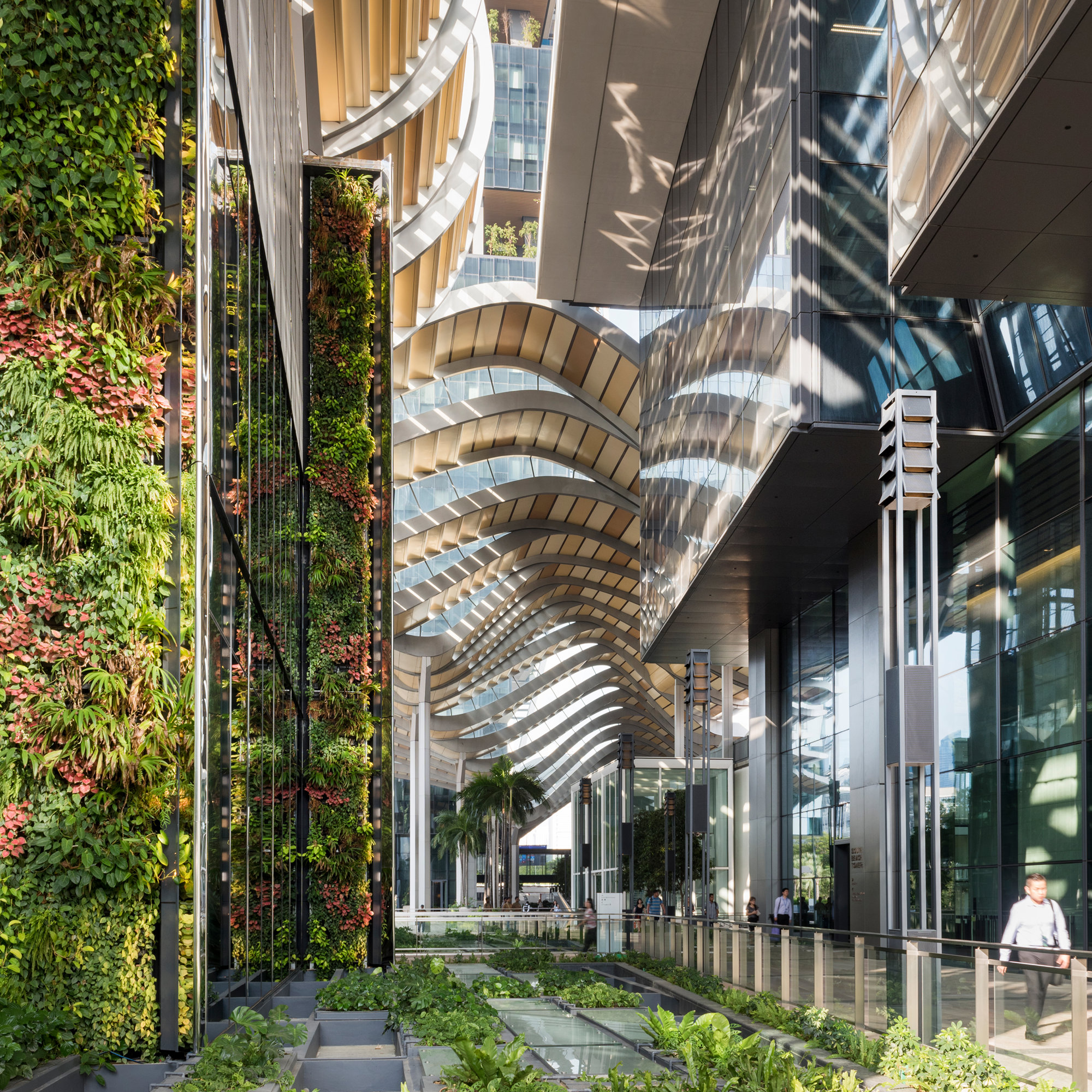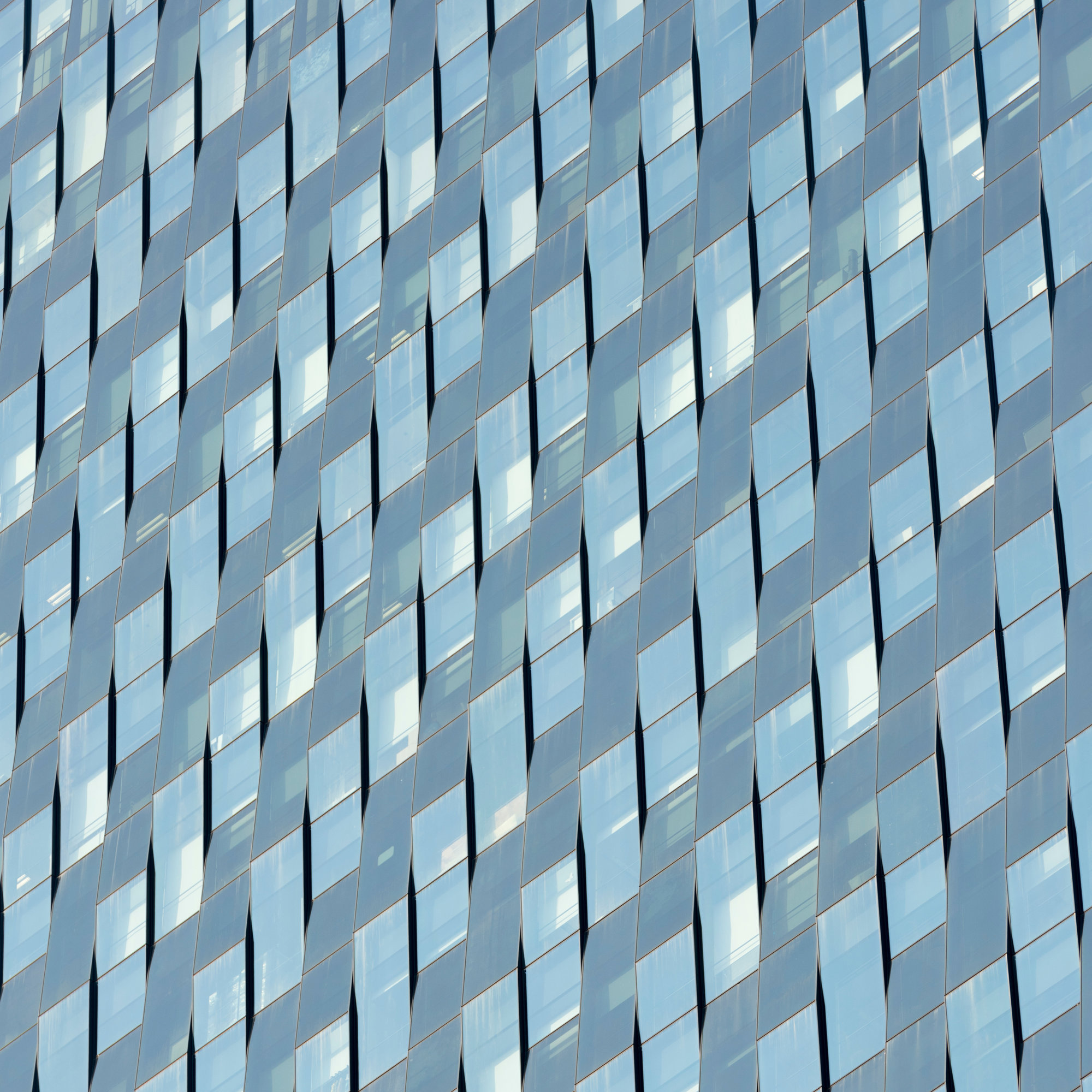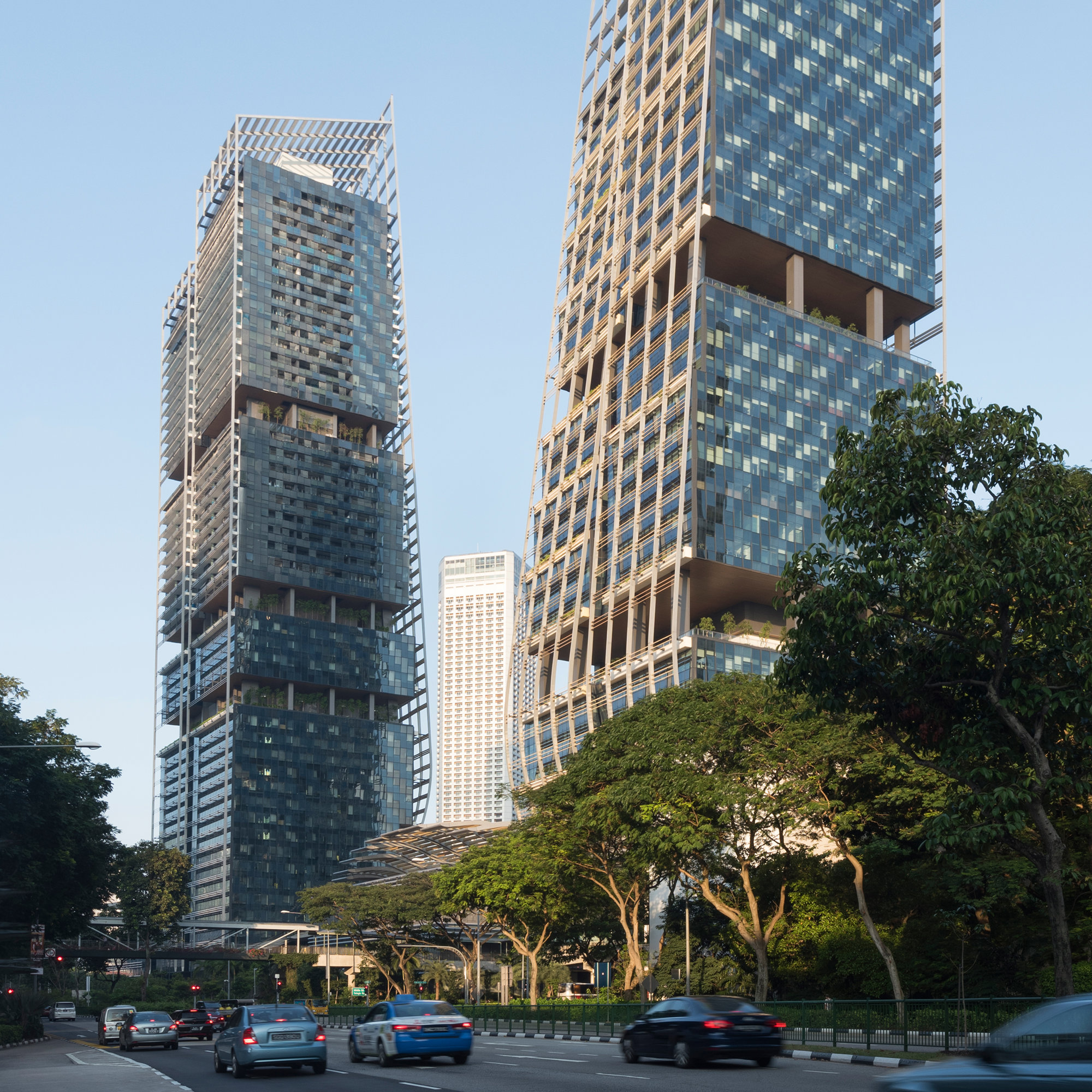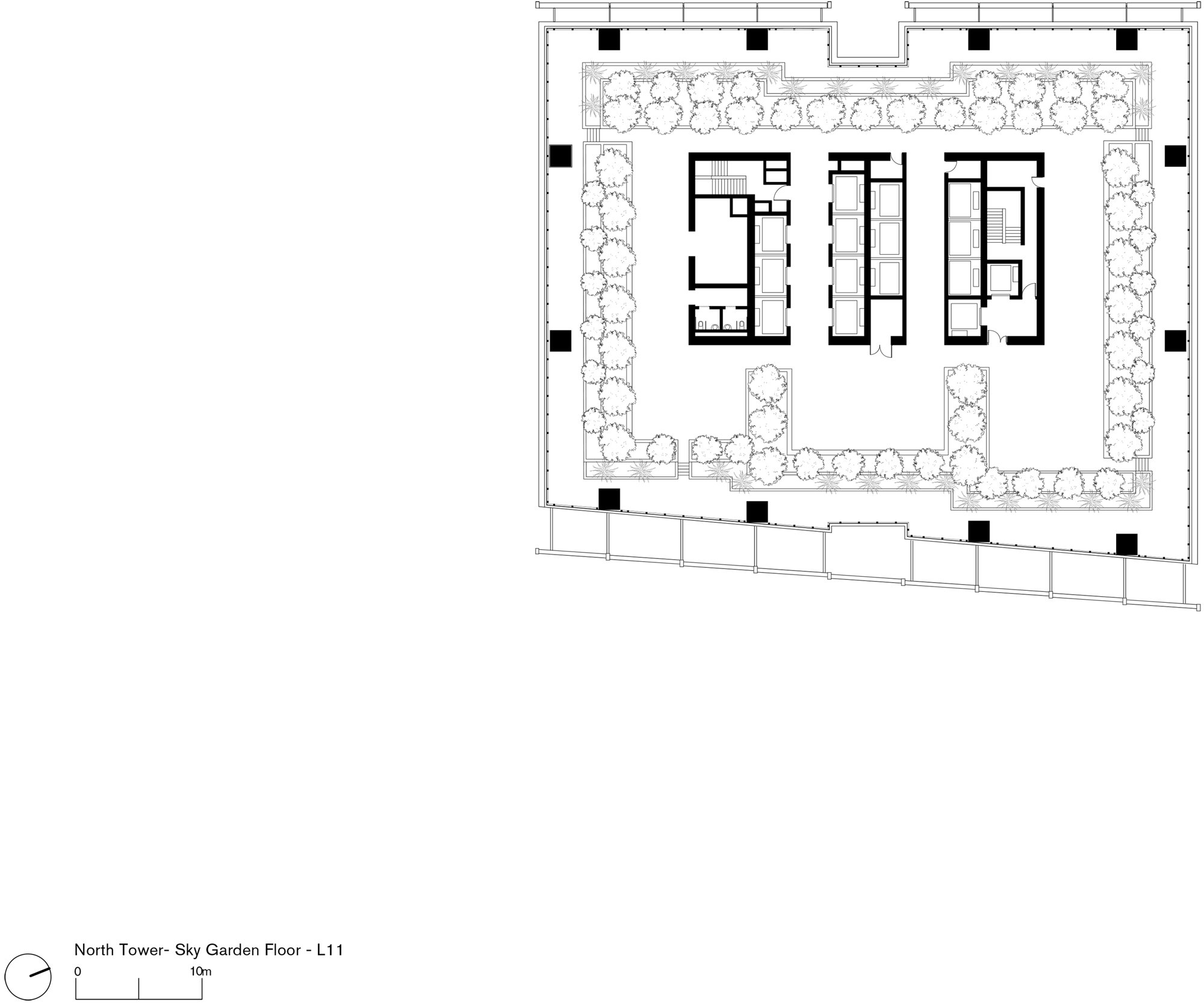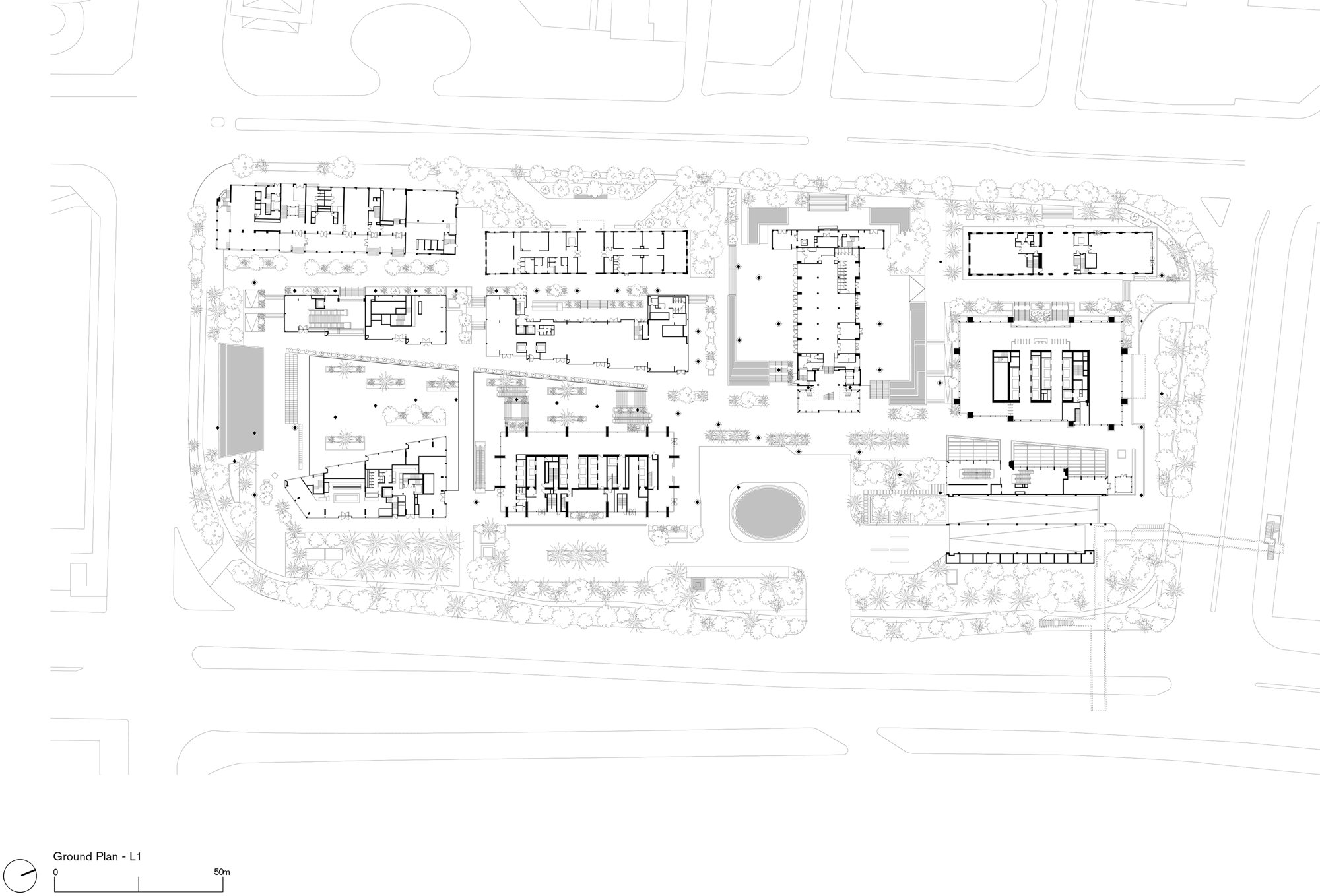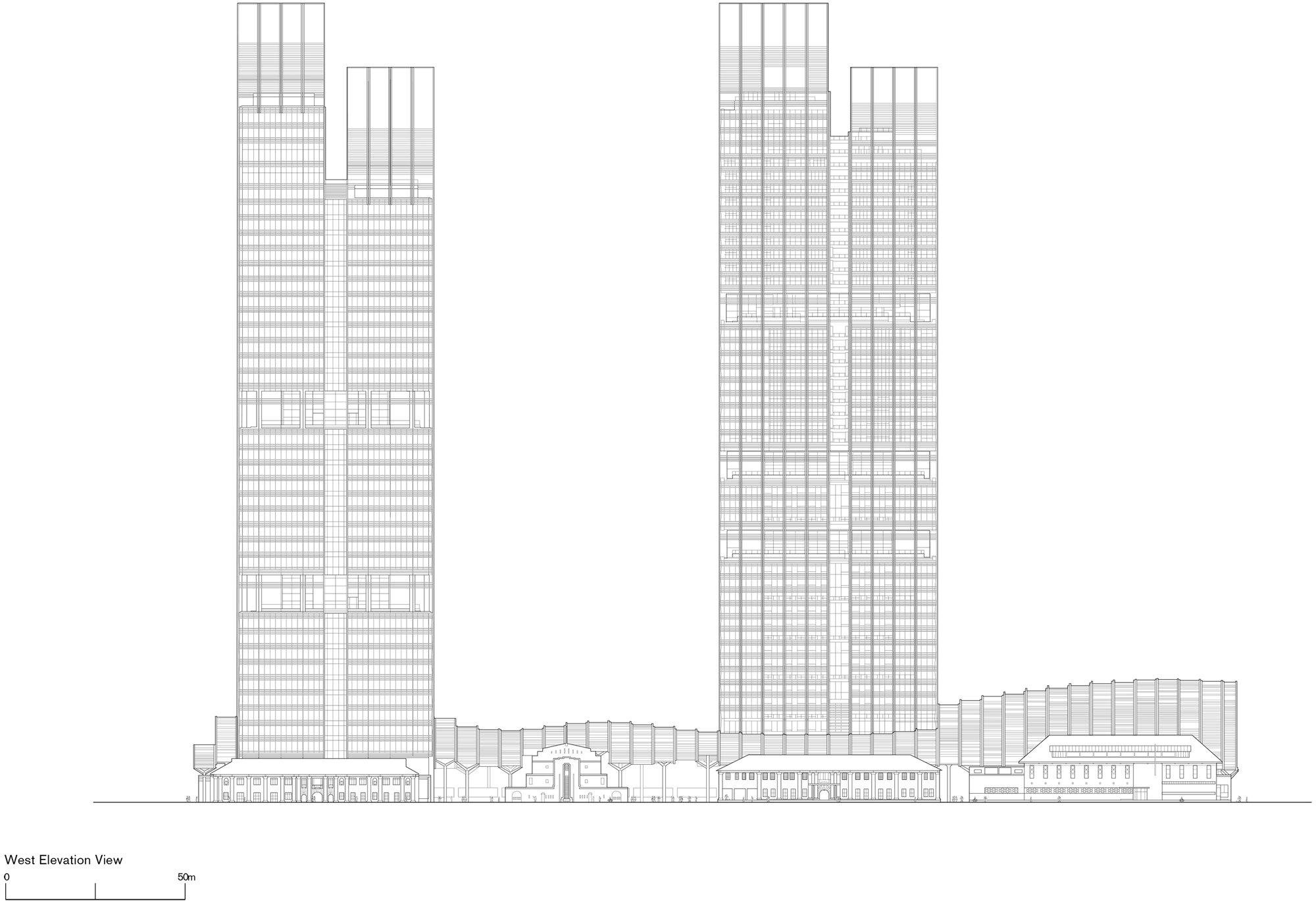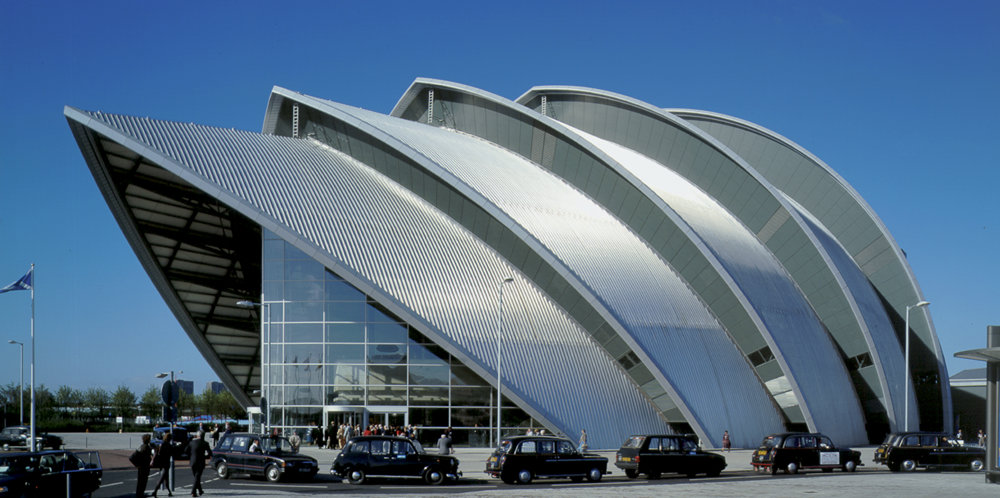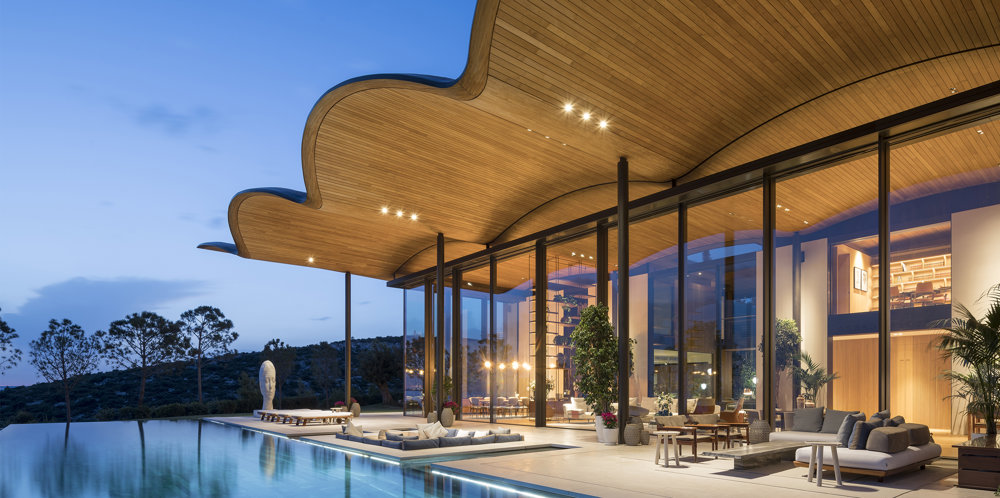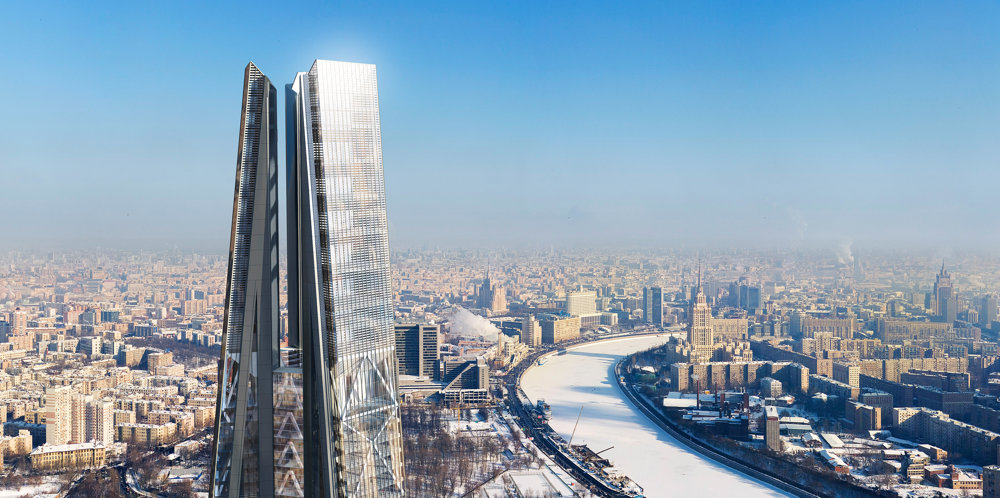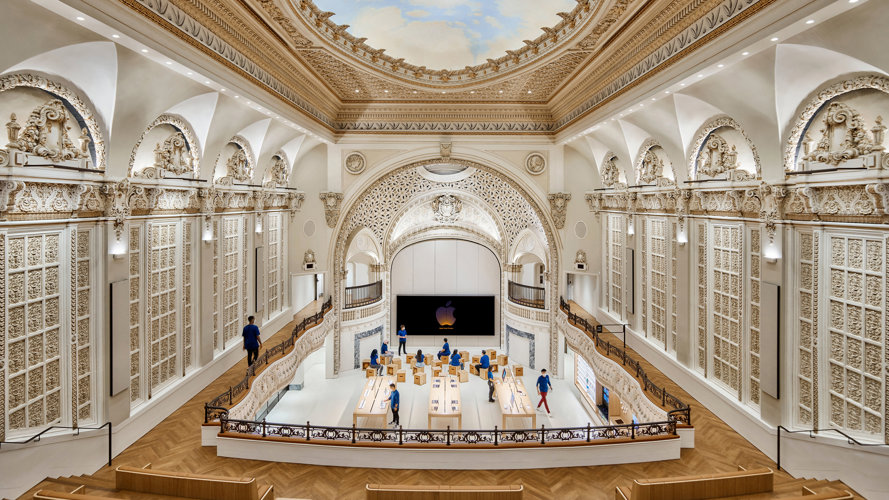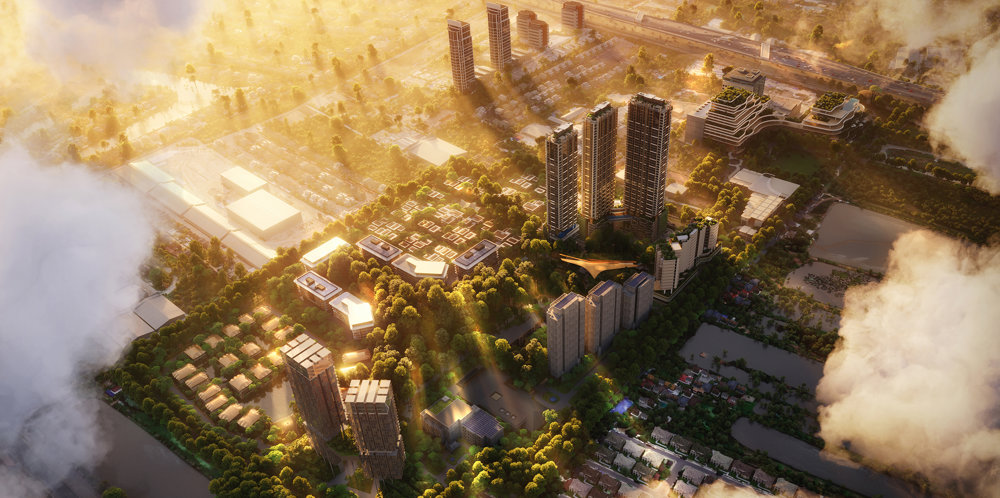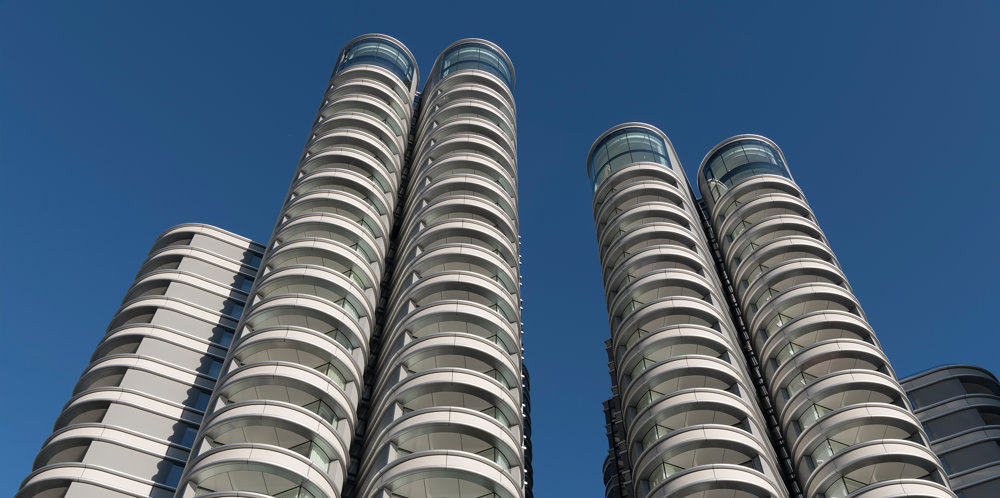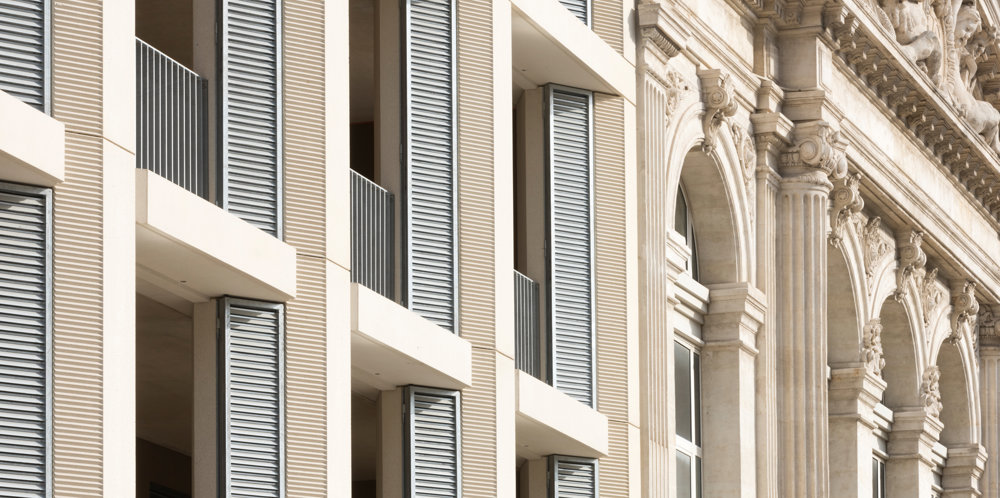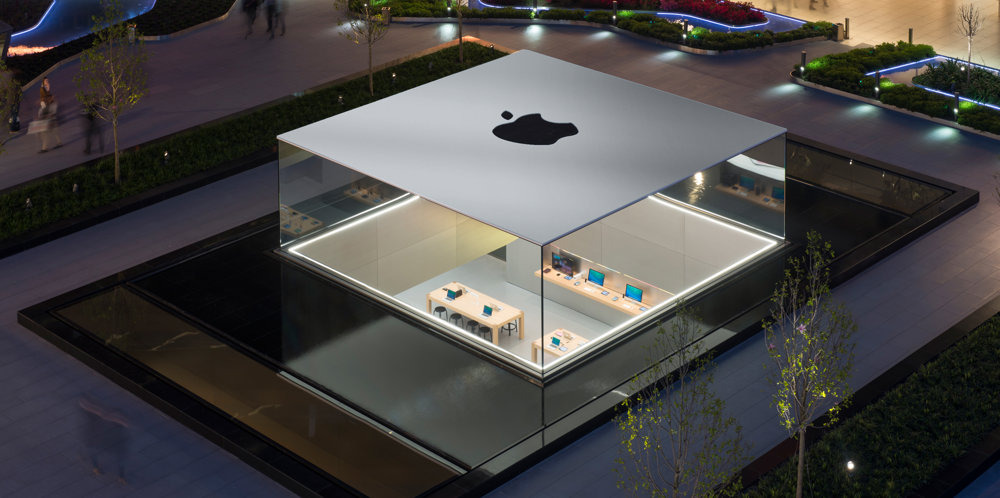The South Beach development covers an entire city block between the Marina and Civic District in the heart of downtown Singapore. Combining new construction with the restoration of existing buildings, the mixed-use, energy efficient new urban quarter brings together places to live and work with shops, cafes, restaurants, a hotel and public spaces. A wide landscaped pedestrian avenue – a green spine – weaves through the site and is protected by a large canopy, which shelters the light-filled public spaces beneath from the extremes of the tropical climate.
Two interconnected pairs of towers stand towards the north and south of the site, connected by the green spine – the south towers are divided between a hotel and apartments, while the north towers contain offices. Their facades extend into a gentle arc, which continues the language of the undulating canopy below – they are angled to capture prevailing winds and direct air flow to cool the ground level spaces. Reinterpreting the Singaporean ideal of the ‘city in a garden’ in a high-rise form, the towers are intersected by densely planted sky gardens with impressive views of the city and Central Business District. At a lower level, the treatment of the perimeter buildings is sensitive to the scale of the nineteenth century Raffles Hotel on the opposite side of the street – the four adjacent former military buildings along Beach Road have been carefully restored and are interspersed with mature trees, which have been conserved on the site.
The canopy’s ribbons of steel and aluminium louvres flex above the primary circulation routes and public spaces, and dip near the edges to meet the Beach Road buildings. The ribbons are supported by slender pillars and rise up the exposed east and west elevations of the towers to form a series of vertical louvres, which are carefully angled to encourage natural ventilation. The entrance to the canopy rises up to form an arc, which acts as a wind scoop, drawing the prevailing breezes through the space and promoting natural ventilation. Beneath the canopy are a series of smaller buildings and flexible spaces for functions and events. Combining rainwater harvesting with a range of environmental strategies, the development achieves a Green Mark ‘Platinum’ Rating. Creating a highly permeable pedestrian public realm, vehicle access to underground parking and drop off points are placed around the edges of the site, and public transport is integrated via a direct ‘green’ link to Esplanade MRT station.










